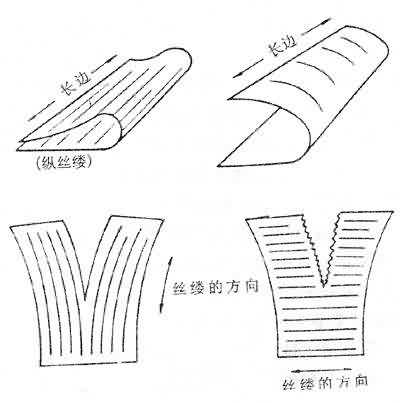Analysis of Printed Elements--Substrates (2)
Paper is a substance that is very sensitive to moisture. Due to changes in temperature and humidity, the paper has a much higher rate of expansion and contraction at right angles to the silk stack than in the square row. Therefore, in the printing or post-printing process, the influence of the paper web on the print quality should be considered. See Figure 2-2. In book binding, the book core is best to choose straight silk paper, that is, the paper silk is parallel to the back of the book, and the silk of the soft cover paper is perpendicular to the back of the book to ensure the flatness of the book. 2. The tensile strength of paper In order to reduce the moisture sensitivity of the paper and maintain a stable moisture content, the sheet should be printed at a temperature of 10°C to 15°C higher than the temperature of the printing shop and a relative humidity of 10% to 20% in a paper room or paper machine before printing. In the middle, hanging for 1-2 hours, and placing it on a paper table with the same temperature and humidity as the printing shop, and placing it for more than ten hours. (The ideal moisture content of the paper is about 5.5% to 6.0%. The temperature of the printing shop should be controlled at 18°C ​​to 24°C, and the relative humidity should be between 60% to 65%).
At present, there are more and more bank CARDS, membership CARDS, business CARDS and so on.Card holder is used to store CARDS or business CARDS and other paper card storage tools, can be very convenient and fast management of various CARDS.The size of the card bag is usually small and suitable for carrying.There are single and double inner sheets, large and small sizes, zipper closure and snap closure.
The printability of paper means that the paper is matched with the printing conditions and is suitable for the performance of the print job. There are mainly paper silk, tensile strength, surface strength, stretchability and so on.
1. The silk of the paper
Refers to the orientation of most of the fibers in the paper. Generally, the orientation direction of the fibers is parallel to the long side of the lithographic paper (based on the full sheet of paper) and the cross-filament is called the “paperâ€. The cross-filament is perpendicular to the long side of the lithographic paper, as shown in Figure 2-1. . 
Figure 2-1 Paper thread 
Figure 2-2 Filaments for binding and packaging
Refers to the maximum tension that paper or cardboard can withstand, expressed as absolute tensile strength (kg) or split length (m). Roll paper In high-speed rotary printing, if the tensile strength of the paper is lower than the longitudinal tensile force applied to the paper, a paper breakage failure occurs. The faster the printing speed, the greater the tensile strength of the paper used for printing should be.
3. Surface strength of paper
Refers to the paper in the printing process, by the ink stripping tension, the resistance to off powder, lint, blistering and tearing performance, with the speed of the paper to pull the wool, the unit is m/s or cm/s. When high-speed printing machine or high-viscosity ink is used for printing, paper with high surface strength should be used for printing. Otherwise, the problem of paper lint and powder dropping will occur. Fine fibers, fillers and coating particles that have fallen off from the paper surface will be printed. The texture of the image on the plate is clogged or piled up on the blanket, causing a "stencil" and degrading the printing plate's resistance to printing.
4. Water content of paper
Refers to the ratio of the reduced mass to the original paper quality when the sample is dried to constant weight at the specified drying temperature, expressed as a percentage. The water content of general paper is between 6% and 8%, and the moisture content is too low. During the printing process, electrostatic adsorption occurs, which can cause difficulties in paper feeding, and can cause problems such as dirt on the back of the printed product.
Paper is a very hydrophilic substance, and the water content changes with the change of temperature and humidity, which causes changes in size and shape. (See Figure 2-3) Overprinting is not allowed for multicolor printing. 
Figure 2-3 Paper deformation
5. The smoothness of the paper
Refers to the degree of unevenness of the paper surface, using a Baker smoothness meter for testing. The greater the volume of air, the longer the time (seconds) through the paper, the higher the smoothness.
Printing is done with smoother paper on the surface. The ink on the printing plate or blanket can come into contact with it in a large area, resulting in clear, ink-filled prints on the paper. For printed products with outlets, only high-smooth paper can be used to make the screen clear and rich in tone and colorful.
Author: FENG Rui dry
Source: Introduction to Printing
Plastic Card Holder,Card Holders,Custom Card Holders,Credit Card Holder
shaoxing chaofeng stationery manufacturing CO.,LTD. , https://www.chaofengstationery.com
